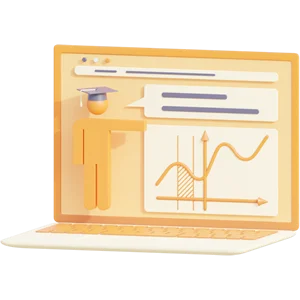2023 NSG 6001 MIDTERM EXAM 2 WITH COMPLETE SOLUTIONS
2023 NSG 6001 MIDTERM EXAM 2 WITH COMPLETE SOLUTIONS
Abdominal aortic aneurysm
1. What is a Saccular Abdominal Aneurysm?
Saccular aneurysm is an asymmetric weakness or bleb on the side of the aorta; these defects result from trauma or an internal wall defect caused by an ulcer.
Fusiform aneurysm is a symmetric weakness of the entire circumference of the aorta that produces a bulge.
2. What are the risks for abdominal aortic aneurysm?
AAA is an important clinical diagnosis because it is associated with considerable risk of rupture and death as the aneurysm enlarges to a diameter of more than 5.0cm (1.96 inches)
3. Know the causes of an abdominal aortic aneurysm. P493
proposed causes of AAA include atherosclerosis, inflammation, mycotic infection, inheritable connective tissue disorders (Marfan syndrome, type IV Ehlers-Danlos syndrome), and trauma.
atherosclerosis has been considered the most common cause of AAA and the known cause in 25% of all AAA.
4. Understand risk factors for abdominal aortic aneurysm. P494
Development of AAA: Atherosclerotic vascular disease, white race, male gender, advanced age, HTN, smoking, COPD, history of hernias, family history of AAA, and presence of other aneurysms.
Hypercholesterolemia
AAA expansion: Advanced age, Severe cardiac disease, Previous stroke, Tobacco use, Cardiac or renal transplant.
AAA rupture: Female gender, Low FEV1, Larger initial AAA diameter, Higher mean blood pressure, Current tobacco use, Cardiac or renal transplant, Critical wall stress–wall strength relationship
AAA is an important clinical diagnosis because it is associated with considerable risk of rupture and death as the aneurysm enlarges to a diameter of more than 5.0cm (1.96 inches).
Evidence suggests that the high prevalence of AAA in patients with COPD may be related to medications (oral steroids) and coexisting diseases rather than to a common pathway of pathogenesis involving plasma elastase or α1-antitrypsin deficiency
AAA and elevated homocysteine plasma levels.
AAA represent 75% of aortic aneurysms
Preview document (3 of 11 pages)
Knoowy benefits
$ 19,28
 Money back guarantee
Money back guarantee
 Documents can be downloaded immediately
Documents can be downloaded immediately
 $0.50 discount when paying with balance
$0.50 discount when paying with balance
-
 Receive free quiz questions with document
Receive free quiz questions with document

Specifications
- School: Chamberlain College Of Nursing
- Course: NURSING
Document
- Section: Examinations
- Made on: 10-25-2023
- Type: .pdf
- Pages: 11
- Language: English
Tags
Seller
Helps students with ALL BEST Revision; Guides,Exams,Summaries,Test Banks ...etc.WISHING YOU SUCCESS
Earn from your summaries?
Subjects of NURSING - Chamberlain College Of Nursing
More NURSING ›ati ati comprehensive predictor ati fundamentals proctored ati nutrition ati pharmacology ati rn comprehensive predictor comprehensive fundamentals health care health care / nursing health care/ nursing hesi hesi rn exit maternal newborn med surg medical nursing medical surgical mental health nurs nursing nursing & health pediatrics pharmacology test bank tncc
 Deal: get 10% off when you purchase 3 or more items!
Deal: get 10% off when you purchase 3 or more items!
Deal: get 10% off when you purchase 3 or more items!









